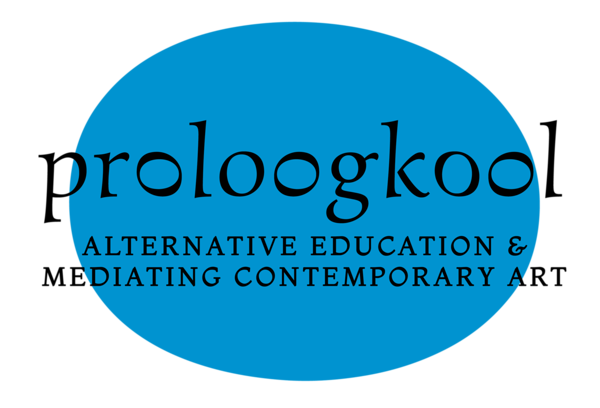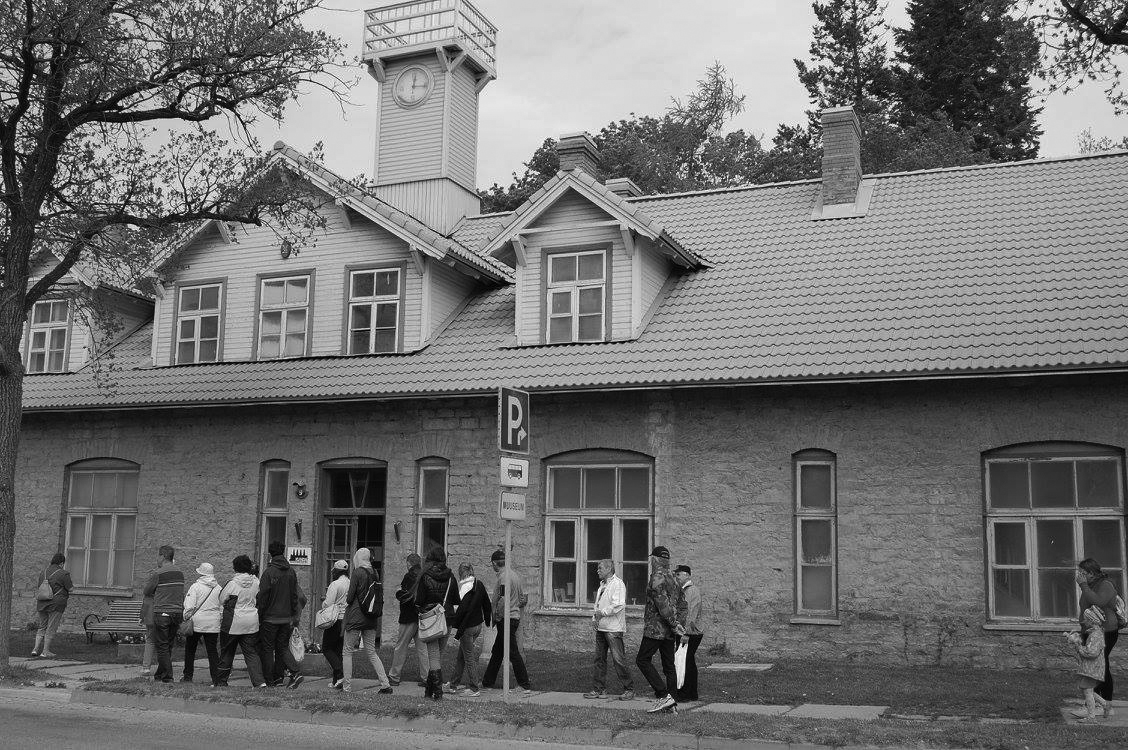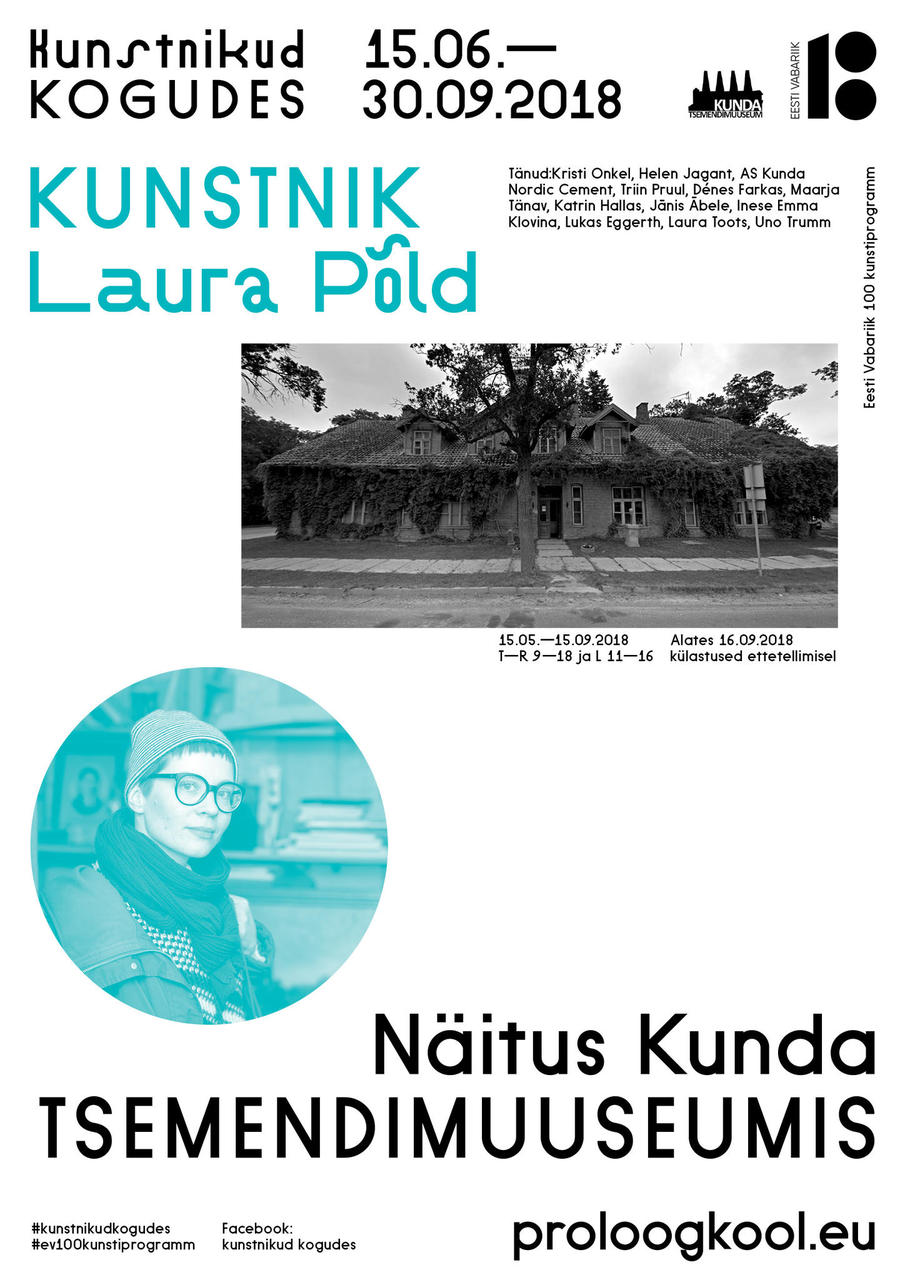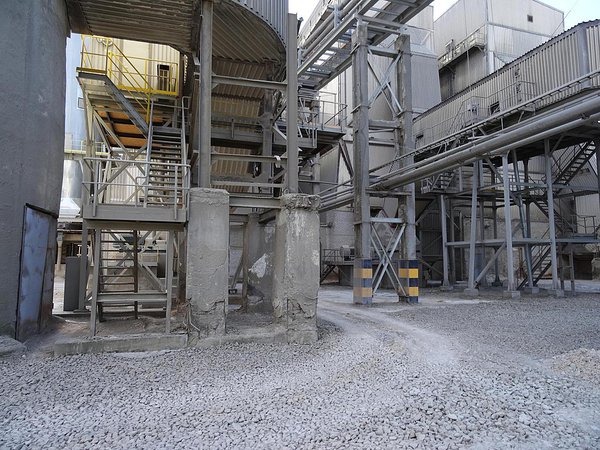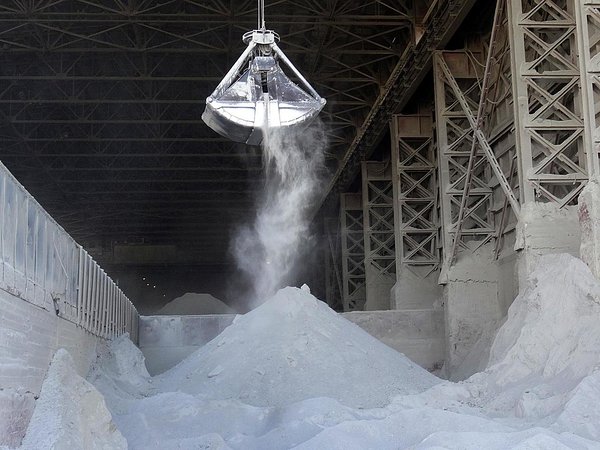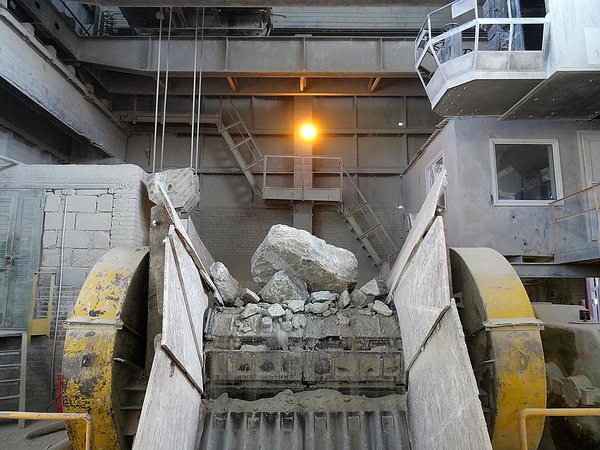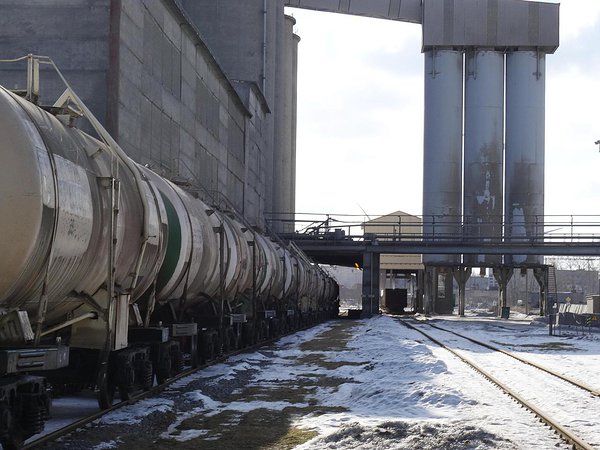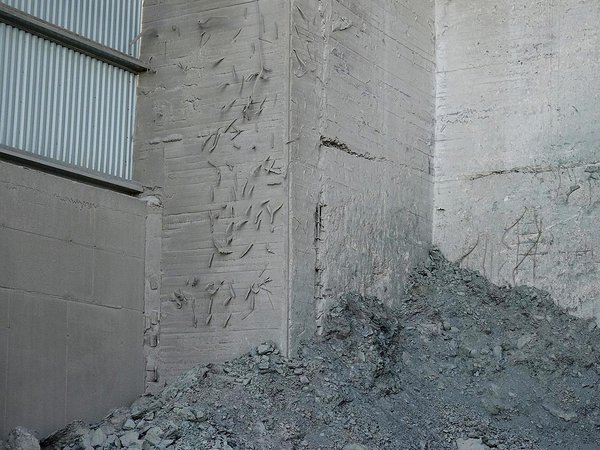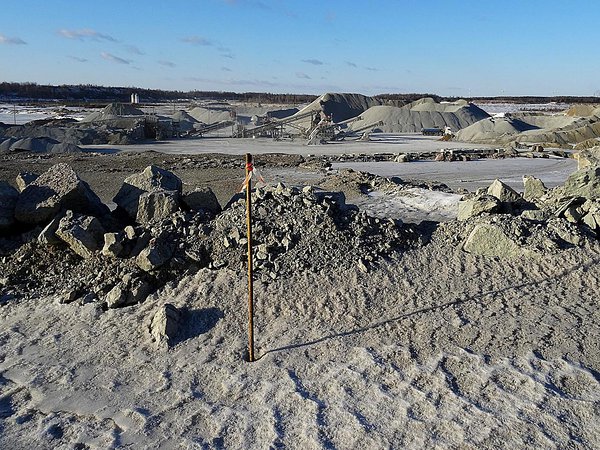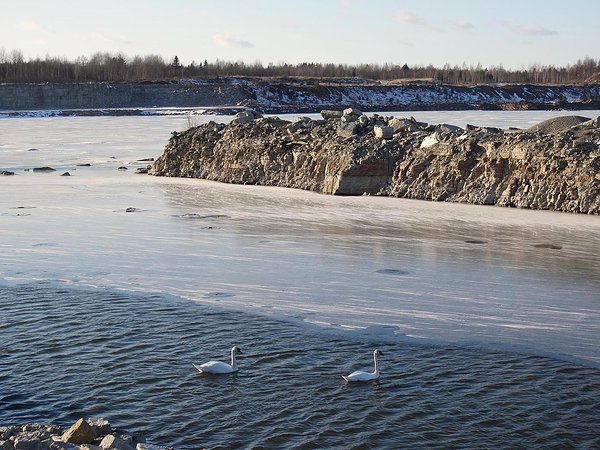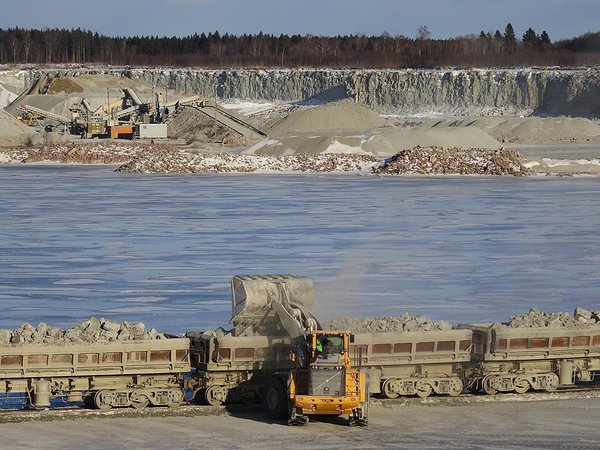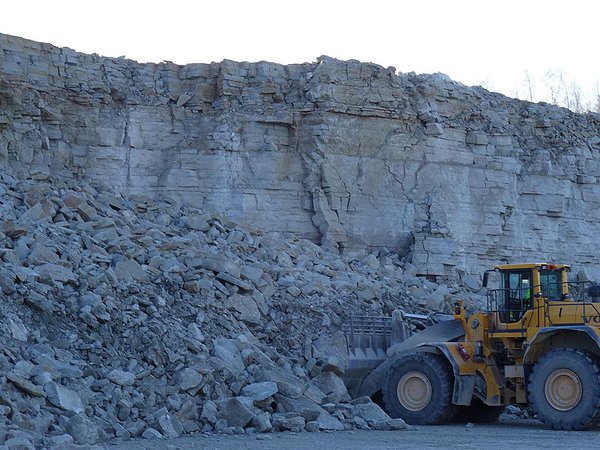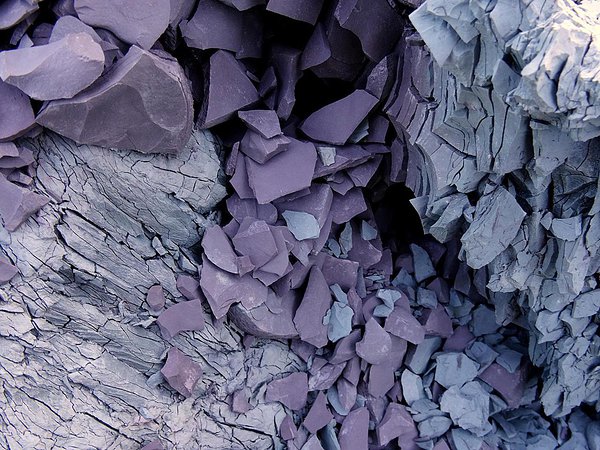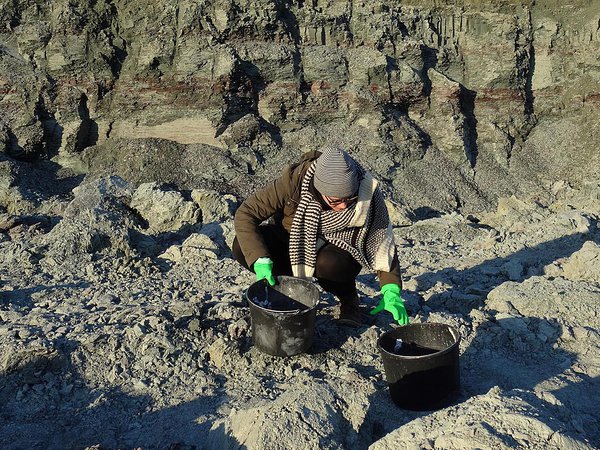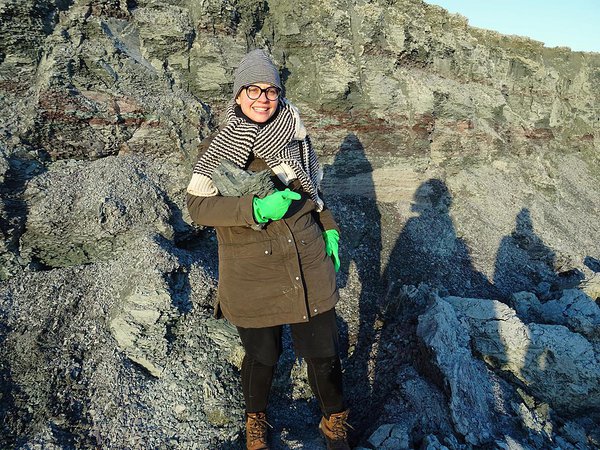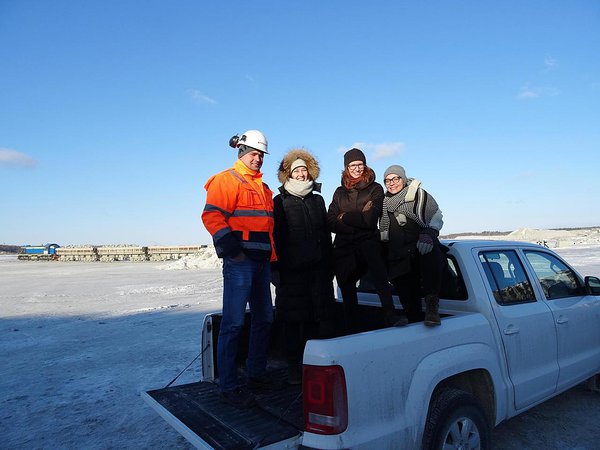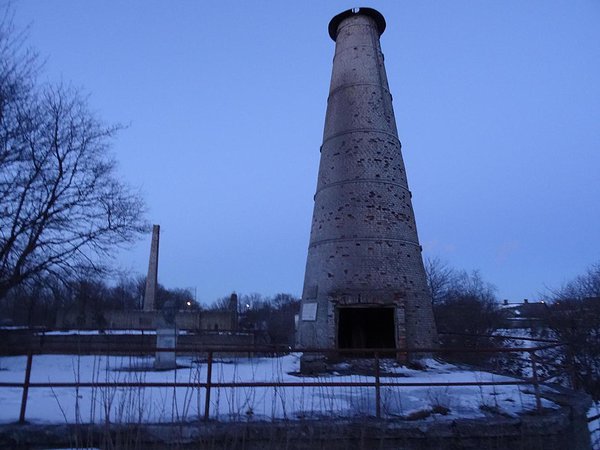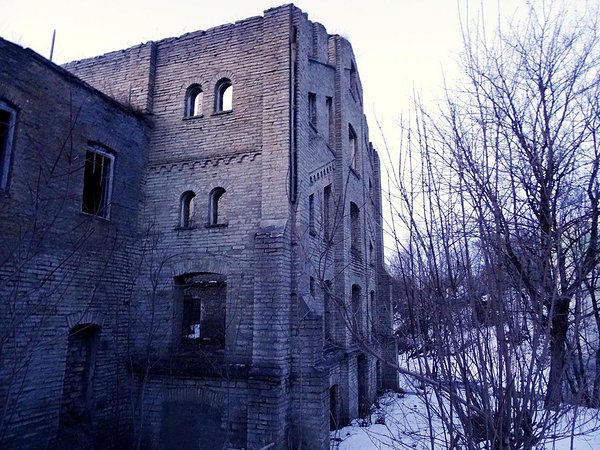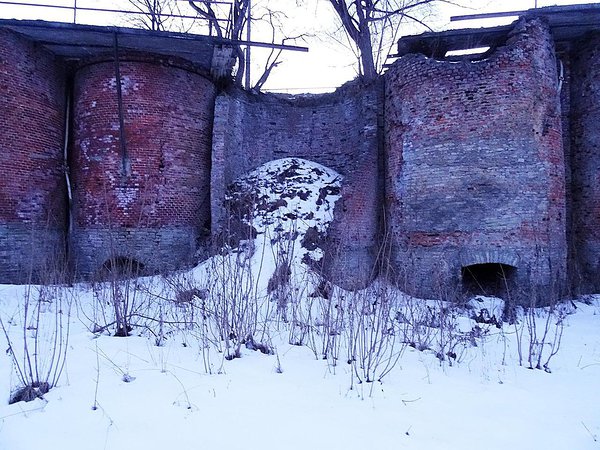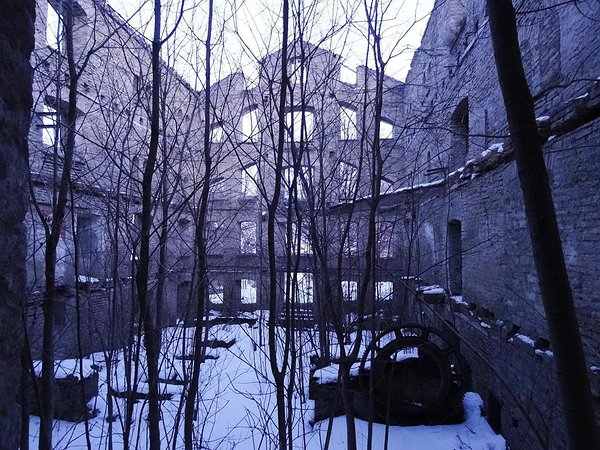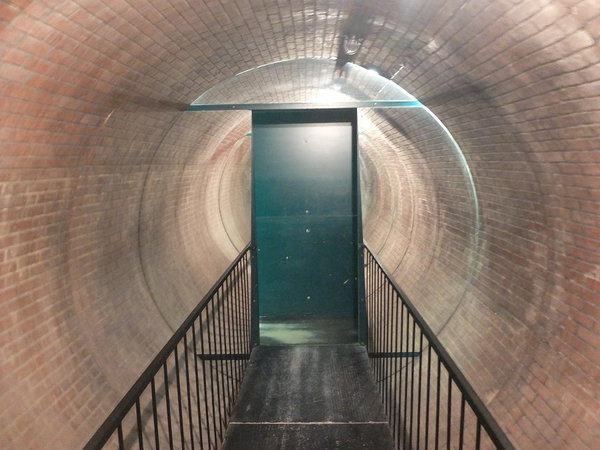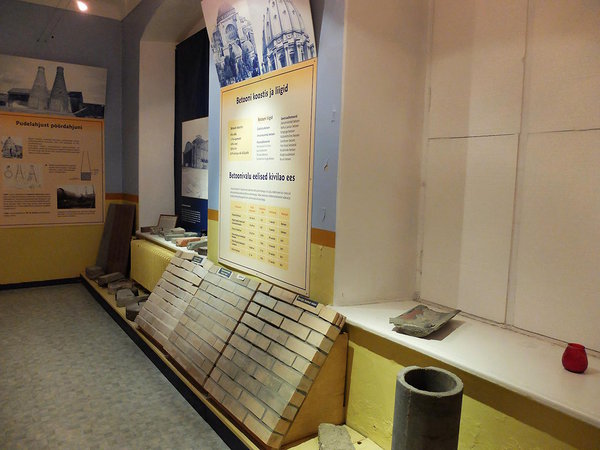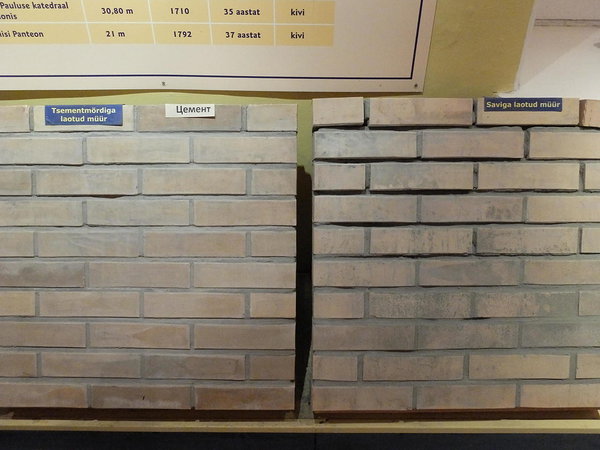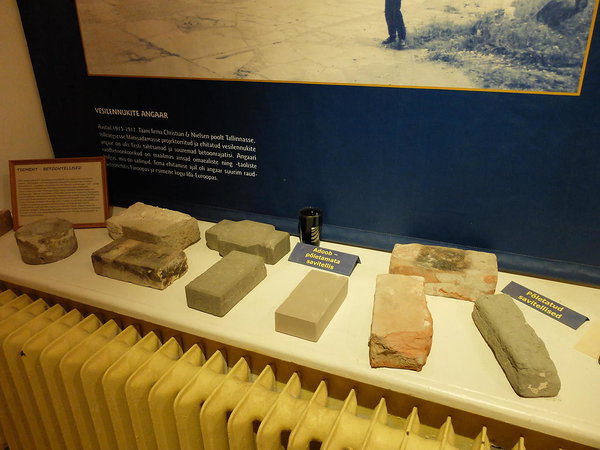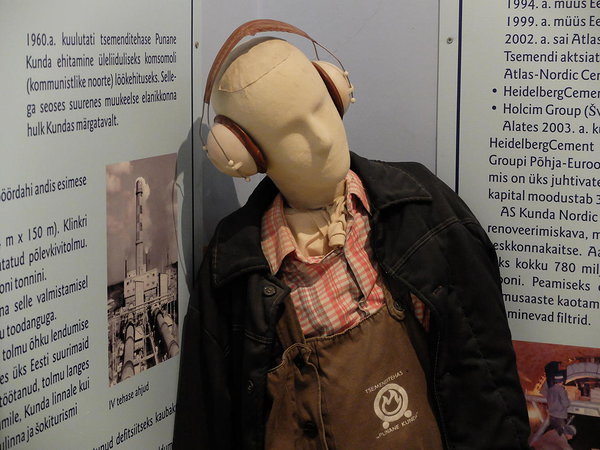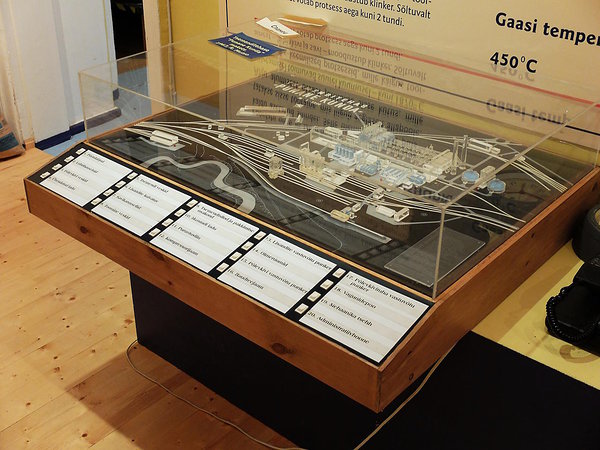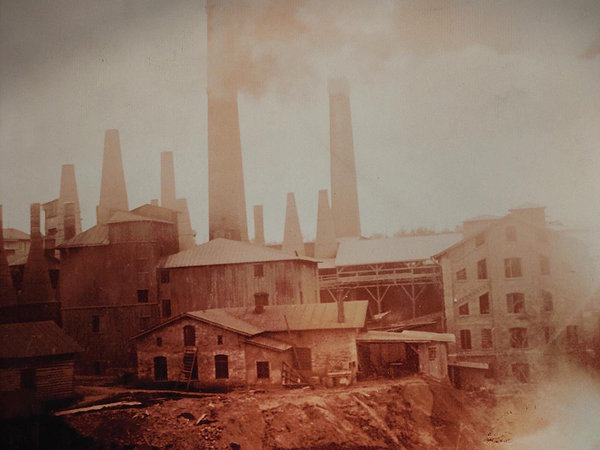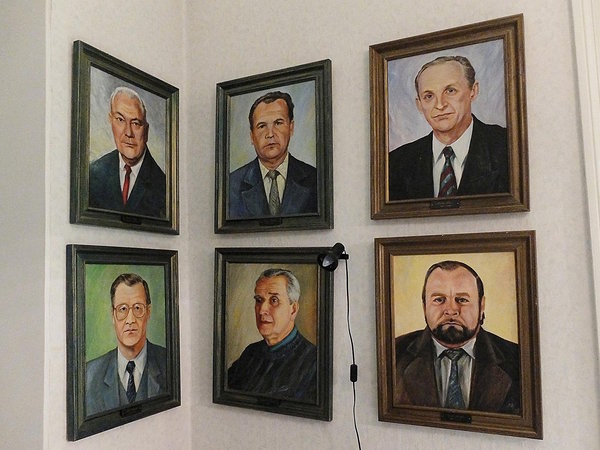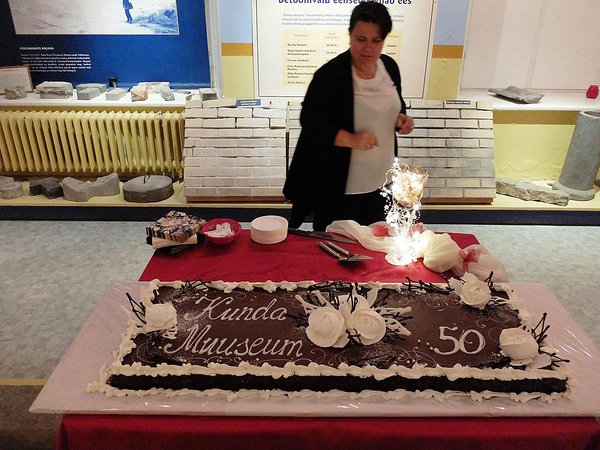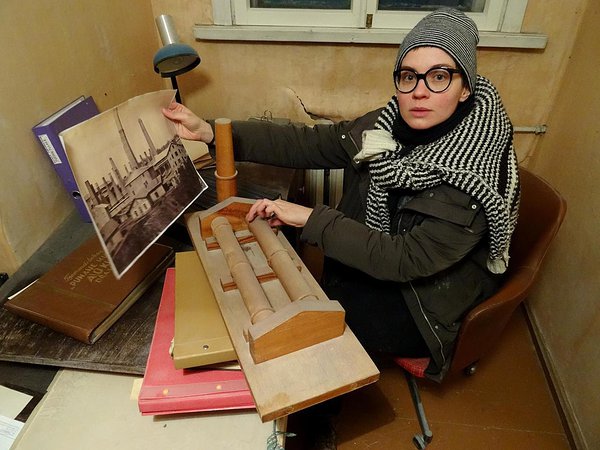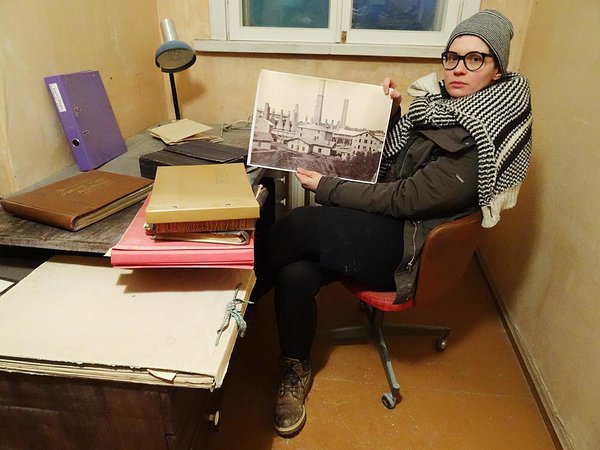Laura Põld + Kunda Cement Museum
Exhibition at the Kunda Cement Museum
15.06.–30.09.2018
Artist Laura Põld created an alternative path inside the permanent exhibition of Kunda Cement Museum, telling a story of the town, its natural resources and its manufacturing history, but in a more abstract and poetic manner. Initially, the artist had planned to work with the charismatic ruins of the old cement factory and chimneys, but allowing visitors there would have been too risky. Therefore, the artist brought some of this sense of architectural heritage to the interior, creating monumental clay walls where different artefacts, such as a former publication of the town’s Volunteer Firefighters Association, ceramic objects and discovered fossils, found their place.
Fluid shapes and the fluid use of material, characteristic to the artist, do not draw a clear line between the natural and the artificial, objects that have been found and ones man-made, the new and the old. By familiarizing herself with manufacturing processes and raw material quarries of Kunda’s Nordic Tsement factory during her residency, Põld drew inspiration from the blue clay of the local Lontova Formation.
Laura Põld is a very process-focused artist — she reaches the final format by experimenting a great deal with the materials. The creation process of this intervention in the permanent exhibition was also long and labour-intensive, and Põld experimented with the techniques of making natural clay plaster and adjusted it to her sculpture-like objects. Põld draws inspiration from primitive ceramics, traditional African architecture, the qualities of the natural materials and above all from the place she is working at, trying to capture its genius loci, its “spirit of place”.
Laura Põld (1984) has a bachelor’s degree in Ceramics from the Estonian Academy of Arts and a master’s degree in Painting from the University of Tartu. Currently, she is studying for her MA in the Department of Sculptural Conceptions / Ceramics at the University of Art and Design Linz. She lives and works in Tallinn and Vienna. Her work, mostly site-specific, deals with the experience related to sense of landscape, material and place. By combining different mediums such as painting, installation, ceramics, video and text and reusing existing materials, she creates landscapes of perception blended in with the space (of the gallery). Laura Põld has been recognized with several awards and scholarships: the Eduard Wiiralt Scholarship (2008), Ado Vabbe Prize (2013), Köler Prize Grand Prix (2016) and Annual Award of Cultural Endowment of Estonia (2014 and 2018). She has been one of the recipients of the artist’s salary since 2018. READ MORE
Kunda Cement Museum offers the chance for visitors to familiarize themselves with how cement was invented and first put to use, the process of manufacturing it and the history of Kunda cement factory. Visitors will also learn why and how people started manufacturing stone, get to know today’s cement industry and by walking through the mock-up of a gigantic rotary kiln, experience how clinker was ground in the furnace. The history of the town of Kunda is completely intertwined with cement manufacturing, from the entrepreneurial manor owner John Karl Girardde Soucanton (1826—1896), commonly known as Suka Anton, to the modern AS Kunda Nordic Tsement factory today, praised by both its employees as well as townspeople. The days when grey dust covered Kunda are in the past and the town’s various formations make for an exciting exploration for both local and foreign visitors. When in Kunda, make sure to also visit the old industrial landscape of Kunda, the hydropower plant, the historic Lontova settlement with its adventure park and Blücher Café, and if the weather is good, the beach is a must!Laura Põld's residency took place during 12.–16.03.2018.
The residency was supported by Kunda Cement Museum.
NB! Part of Laura Põld’s addition to the permanent exhibition has remained in the museum.
Public programme
15.06.2018 Art Bus from Tallinn14:00 Tour at the Kunda Nordic Tsement factory16.06.2018
16:00 Exhibition opening and artist’s talk
17:00 Tour of Kunda’s old industrial landscape led by Uno Trumm
18:00 Exhibition tour with the artist
19:00 Talk on Estonian contemporary art by Maarin Ektermann and Mary-Ann Talvistu
29.09 Estonian Museum of Natural History’s wild walk “One hundred years of artificial landscapes in Ida-Viru County” with special bus from Tallinn. The walk featured past and present artificial landscapes that have predominantly been formed by the mining and processing of oil shale, which started more than 100 years ago. The walk was led by geologist Sander Olo.
30.09 End of the museum season. Workshops and talks on the many uses of Kunda blue clay. These included both practical techniques for ecological interior design (supervised by Triin Pruul) as well as aesthetic approaches in experimental ceramic art and contemporary art (supervised by Laura Põld). The workshops were followed by drinking tea from teaware made by the artist.
Thank you: Kristi Onkel, Helen Jagant, AS Kunda Nordic Tsement (especially Peeter Toom, Ülari Pai and Allar Aamer), Triin Pruul, Dénes Farkas, Maarja Tänav, Katrin Hallas, Janis Abele, Inese Emma Klovina, Lukas Eggerth, Uno Trumm, Contemporary Art Museum of Estonia, Estonian Academy of Arts Department of Ceramics, Estonian Academy of Arts Library, Estonian Museum of Natural History
Gallery
As part of the residency we also visited the factory and quarry of Kunda Nordic Cement, a big thank you for the exciting tours! Interesting information about the history of cement manufacturing was also shared by Uno Trumm.
